Planet Buddies Volume Limited Headphones Review
Healthy headphones for kids

Verdict
The Planet Buddies Volume Limited Headphones combine adorable designs with a 85dB limit to protect your kids’ ears from hearing damage.
Pros
- Volume limited to protect small ears
- Fun designs
- Affordable prices
Cons
- Poor tonal balance
- All the pairs I tested require a 3.5mm jack
- The multifunction button doesn’t work with some devices
Availability
- UKRRP: £19.99
Key Features
- Volume limitedThe headphones max out at 85db to protect kids’ hearing
- Playful designsDesign options range from printed characters, to animal ears, and drawings of characters that can be coloured and swapped in and out of the ear cups
- Smaller headbandThe headband is small enough to fit a child’s head
- Durable buildThe headphones are designed to survive drops and knocks
Introduction
Planet Buddies is a brand that aims to educate children about endangered animals and the global issues that threaten them through their audio devices.
With the help of a handful of characters – including a penguin, an owl, a turtle, a whale, a panda and a tiger – Planet Buddies uses recyclable packaging to teach kids about these endangered animals, along with how we can all help protect the earth.
But, are its Volume Limited headphones any good? I tried three different Planet Buddies styles – Olive the Owl, Pippin the Panda and Colour and Swap to see whether they’re suitable for the little ones in your family.
Design
- The headbands are comfortable, adjustable and vary in size
- The Olive the Owl and Colour and Swap pairs fold up to fit in a carry pouch
- The Colour and Swaps are customisable and come with crayons and cards in the box
The Olive the Owls are the most low-key pair of Planet Buddies headphones I tried as far as looks are concerned, with no ears or customisable ear cups in sight. However, the pinky peach shade was probably my favourite of the bunch, and the design incorporates many visual details, from the owls on the ear cups to the falling leaves dotting the headband.

The plastic headband is easy to adjust to fit smaller and larger heads alike, and the padding on the band and ear cups made the headphones comfortable – although I doubt Planet Buddies had my adult-sized head in mind when they designed the Olive the Owls.
The Olive the Owls fold up neatly to fit into the accompanying hemp carry pouch.

It isn’t the softest carry case around, and the printed logo looks a little cheap, but the material is eco-friendly and it does the job of protecting the headphones from scuffs when you’re out and about.
The Pippin the Panda headphones may not have the most compact design –they don’t fold up – but they’re certainly the cutest of the bunch.

The headphones are made from black and white plastic, with blushing cartoon pandas embossed on both ear cups. The headband itself is wrapped in a soft felt material with tiny panda ears sticking up on either side.

The headband seems to offer the smallest fit of the three headphones I tried, making me think they’d be better suited for younger listeners with smaller ears. The ear cups are also the wrinkliest, making them appear very cheap – although this isn’t exactly surprising considering their £19.99 price tag.
Unlike the other pairs, the Pippin the Pandas lack a carry pouch, with my best guess being because they don’t fold up like the other two headphones.
The Colour and Swap headphones are the best Planet Buddies pair for young artists and kids who like to express themselves. This is because children can actually have a hand in the design themselves.
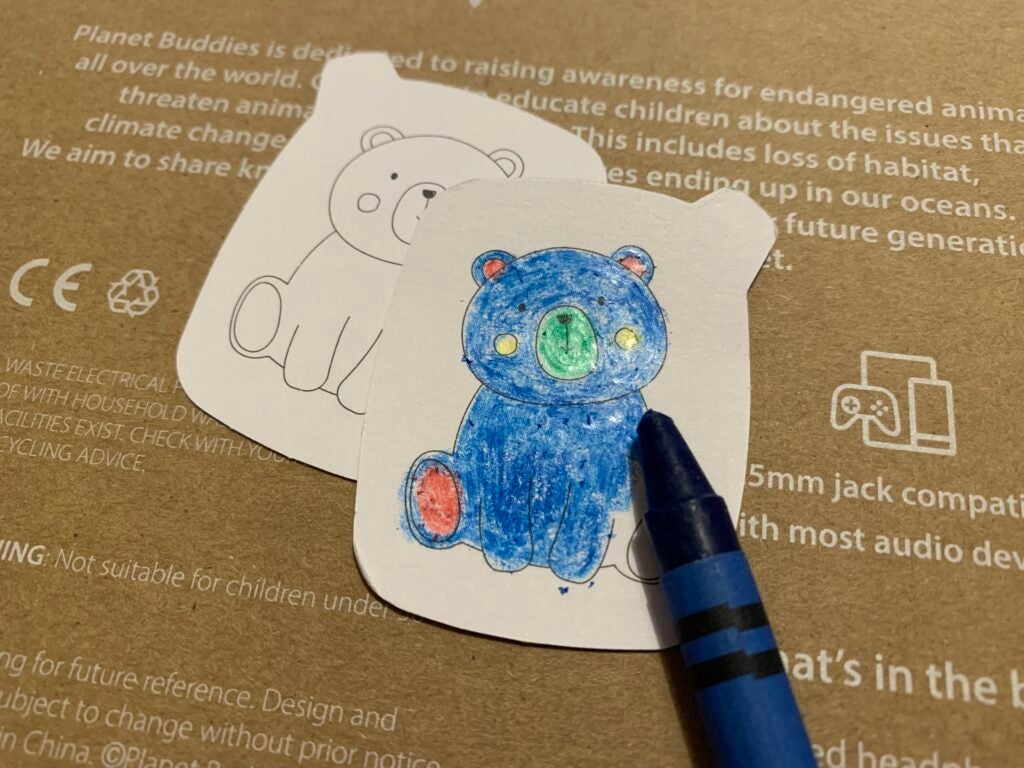
With the Colour and Swaps, the rectangular ear cups feature a window where you can slide in small cards to customise the look.
Planet Buddies includes 12 already-coloured cards, 12 cards with outlined designs ready to be coloured in, and a pack of four crayons, so kids can get creative personalising their headphones.

My biggest criticism here is the limited array of colours and the waxy texture of the crayons, but you can easily swap them out for any other pens, pencils or paints you have at home.
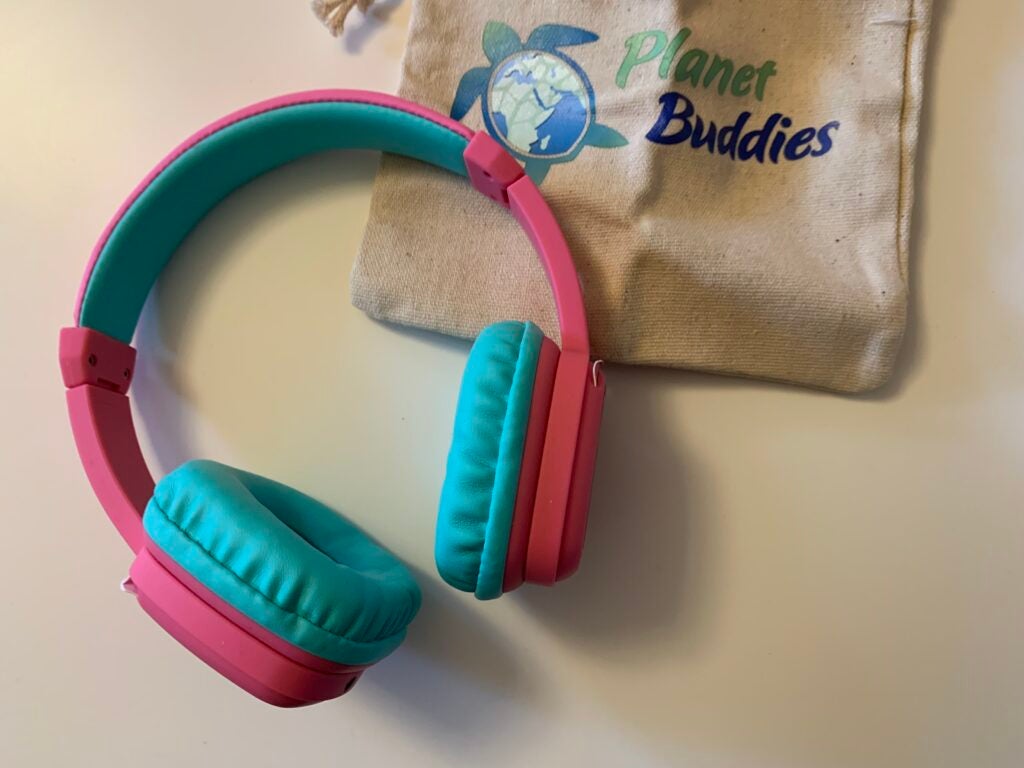
The headphones themselves are available in vibrant pink/blue and blue/green colourways, with the same adjustable plastic band found on the other headphones. The headband and ear cups are coated in a faux leather that appeared prone to creasing and dents, but is still soft and comfortable.

The headband seems to be the largest of the three headphones, sporting a slightly looser fit compared with the Olive the Owls; but there isn’t a whole lot between the two in this regard.
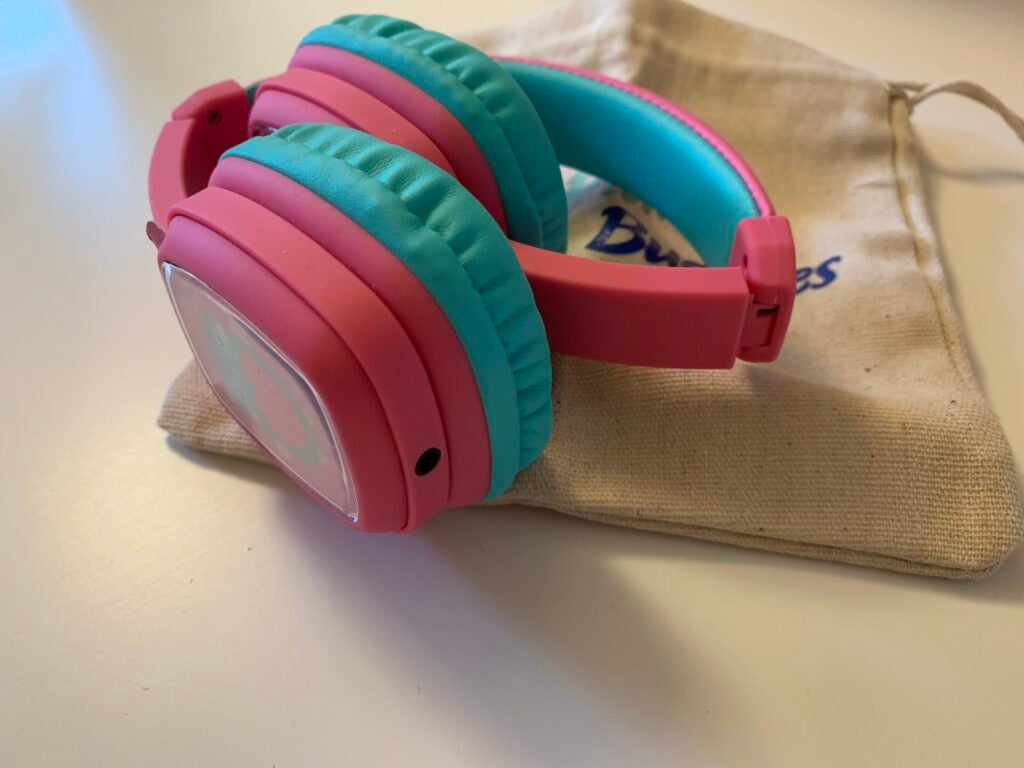
The Colour and Swap headphones fold up and include the same hemp carry pouch as the Olive the Owls.
None of the headphones include an IP rating for water-resistance.
Features
- Multifunction buttons on the wires of Olive the Owl and Colour and Swap don’t support all devices
- The Pippin the Pandas have no multifunction button
- The Pippin the Pandas have an addition port for sharing music
The Olive the Owl headphones are wired, with a 3.5mm jack cable included in the box. There’s a multifunction button that allows you to pause/play, answer calls, skip tracks and call upon Siri or Google.
The multifunction button works with “most devices” – but, as it turns out, my Lenovo laptop isn’t one of those. I tried the headphones on a MacBook and they worked perfectly, so it depends on your tech. The multifunction button on the Olive the Owls also lacks the volume buttons found on the Colour and Swap headphones.
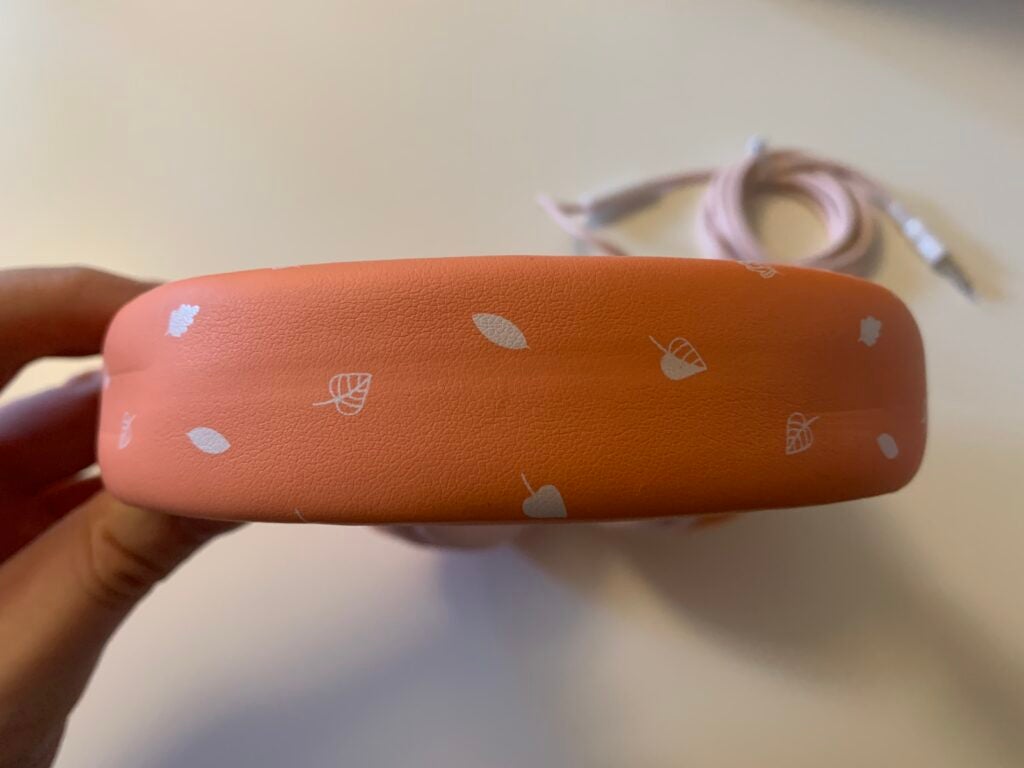
It’s also important to note that many smartphones these days don’t include 3.5mm jack ports, so you may need an adapter with those devices. Luckily, Planet Buddies also makes wireless headphones for those who would rather ditch the cables altogether.
The Pippin the Pandas were the only pair I tested that lacked any multifunction button, but one interesting feature they did have was a second 3.5mm jack.

The two ports, which sit on opposite ear cups, make it easier to listen to music with friends. Simply plug the Pippin the Pandas into a phone or laptop, and a second pair of headphones or earbuds into the Pippin the Pandas, to share music across both sets.
Like the Olive the Owls, the Colour and Swaps include a multifunction button on their wire, but this time the bar includes up and down volume buttons alongside the standard playback button. This makes the Colour and Swaps the most kitted out of the three.
Sound quality
- Volume is limited to 85dB
- Warm and bass-heavy sound
- The headphones lack dynamism
One of the biggest selling points for all three pairs of headphones is their volume-limiting tech.
The World Health Organisation recommends an 85 decibel limit for kids aged three and over listening to up to eight hours of audio a day. All three Planet Buddies headphones peak at 85dB, helping prevent noise-induced hearing loss in children. If you’re looking for a similar limit for adult ears, you can check our review of the PuroPro Hybrid ANC.
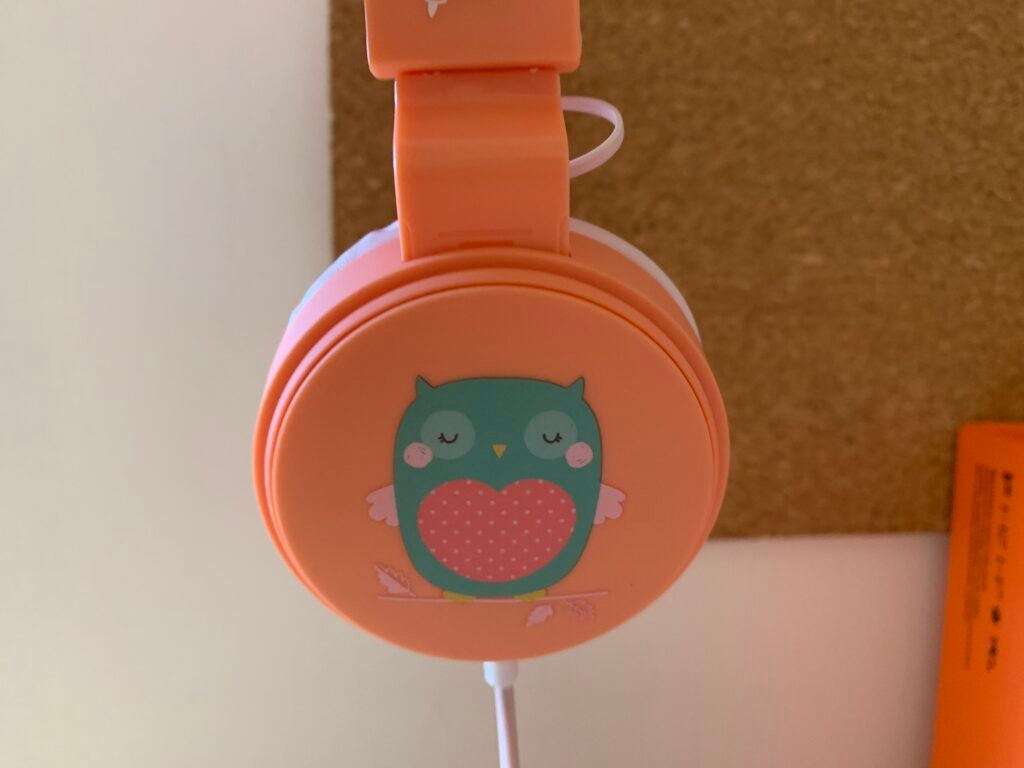
The Olive the Owls pack 40mm drivers and surprisingly decent bass performance.
Money by Lisa is a great example of this. The song’s thump of the bass isn’t lost on the Olive the Owls, and the soundstage is wide and spacious. It does seem that some dynamism is lost with the 85dB volume limit, but I doubt this would bother most kids using these headphones for online classes and casual listening.
Stay by The Kid Laroi and Justin Bieber offers a similarly low and spacious sound, with a clear stereo image and warm bass. The headphones definitely seem to lean more toward the lower end – in this case, the track loses out on clarity and dynamism as the higher notes fall flat.
Like the Olive the Owls, the Pippin the Panda headphones pack a 40mm driver and are volume limited to 85 decibels.

The audio quality is comparable to the Olive the Owls, too, offering a bass-heavy, more muted listening experience when compared with regular, non volume limited headphones.
That said, I did prefer the sound of the Olive the Owls; the larger ear cups did a better job surrounding my adult ears, cutting out outside noises more effectively.
The Colour and Swap headphones are the only pair of the three to include a 30mm driver, which would explain why they’re slightly less bass-heavy compared with the Olive the Owl and Pippin the Panda headphones.
The audio is nevertheless similar to that produced by the Olive the Owls, with a sound that leans toward the low-end and a spacious soundstage. Like the other pairs, the Colour and Swaps also lack a lot of dynamism and are volume limited to 85dB.

I felt the Colour and Swaps struggled to produce detail and clarity more so than the other pairs – but, again, these headphones are marketed toward kids, so I wouldn’t expect flawless audio.
Latest deals
Should you buy it?
You need a pair of headphones for your kidsThe Planet Buddies headphones are cute, affordable and volume limited to protect young ears.
You want great-sounding audio While these headphones by no means sound bad, they lack the tonal balance and dynamism needed to recommend them on their audio abilities alone.
Final thoughts
Planet Buddies’ Volume Limited range of headphones offer cute designs and a volume limiting feature to protect your kids’ ears.
While there are subtle differences between models – such as the additional 3.5mm port on the Pippin the Panda headphones or the volume buttons on the Colour and Swap – many of the features and sound quality are consistent across the range.
The biggest difference between the three lies in the design, meaning the decision will probably come down to which set your child likes the look of the most.
How we test
We test every headphones we review thoroughly over an extended period of time. We use industry standard tests to compare features properly. We’ll always tell you what we find. We never, ever, accept money to review a product.
Find out more about how we test in our ethics policy.
Tested the headphones for one week
Tested with different streaming services
Tested with different devices
FAQs
Planet Buddies do make wireless headphones, but all three pairs tested here are wired.
The Olive the Owls and the Pippin the Pandas cost £19.99, while the Colour and Swaps are slightly pricier at £24.99.
The World Health Organisation recommends that children aged three and over limit their audio to 85dB and only listen for up to eight hours a day to protect their hearing.








